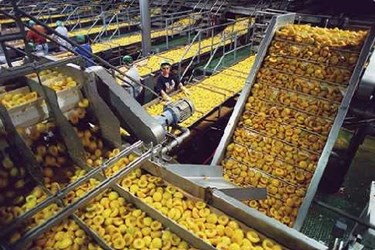Five Tips To Keep Food-Processing Equipment In Top Form
By Isaac Fletcher, contributing writer, Food Online

Most food processors rely very heavily on equipment and breakages and delays can create costly downtime. By implementing thorough maintenance practices, processors can maintain efficiency, limit operational downtime, and improve profit margins
In order for food processors to get the most out of their equipment and maintain profitability, proper maintenance is vital. If lines slow down, are subject to unplanned stoppages, or experience prolonged delays, not only does productivity suffer, but high-cost inputs and products may spoil. The following maintenance tips can help processors avoid those costly mishaps and keep profit margins high.
Upkeep
A great place for food processors to start is to simply follow the equipment manufacturers’ recommendations for planning preventative maintenance. Regularly inspecting all of the equipment’s components, replacing worn out parts, and upgrading various components to higher-quality alternatives can help to extend the functional life of the equipment and avoid any costly breakdowns. Additionally, by keeping a detailed log for each piece of equipment, processors can ensure that preventative maintenance practices are being properly followed. Don't forget to regularly lubricate your equipment with the proper food-grade lubricant.
Routine Calibration
Equipment gauges can naturally fall out of alignment over time, which can cause issues such as disproportionate mixing or inaccurate weighing of products. By regularly calibrating equipment, processors can bring gauges back into alignment and restore accuracy throughout the production line. To be sure all equipment continues to maintain a high level of performance, processors should aim to regularly calibrate their equipment at least once per month.
Keep Extra Parts
Even with diligent preventative maintenance, equipment can still experience breakdowns. In the event of a breakdown, processors can save valuable time and reduce operational downtime by stocking the spare parts recommended by the equipment manufacturer. Having part replacements on hand will enable processors to get the equipment up and running again and limit the losses of any breakdowns that may occur.
Operator Education
As with many elements of production, there is a right way and a wrong way for processing equipment to be operated. Incorrect operation will likely cause unnecessary increases in wear and tear, reducing the functional life of the equipment. Worse still, improper operation can result in outright equipment breakage, which can result in costly replacement or repair. Spending the upfront time and cost to properly train employees is an investment that will pay off in the long run. When operators are properly trained in the setup and orientation of processing equipment, production efficiency can be improved and equipment will last longer.
Inspection
Aside from preventative maintenance and calibration, equipment needs to be inspected on a regular basis. One of the best ways to approach inspection is to create checklists for what to look for in the way of wear and tear and inspect all equipment components thoroughly. Although inspection may cost time, close inspection can catch potential breakdowns before they happen, limiting downtime and mitigating repair costs.
